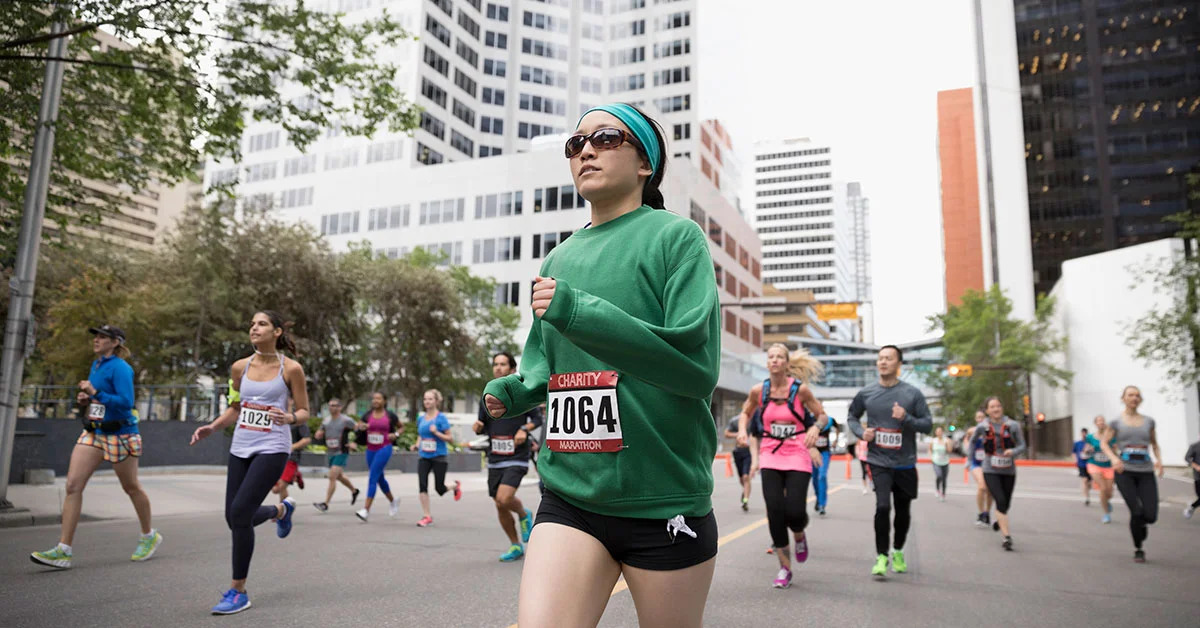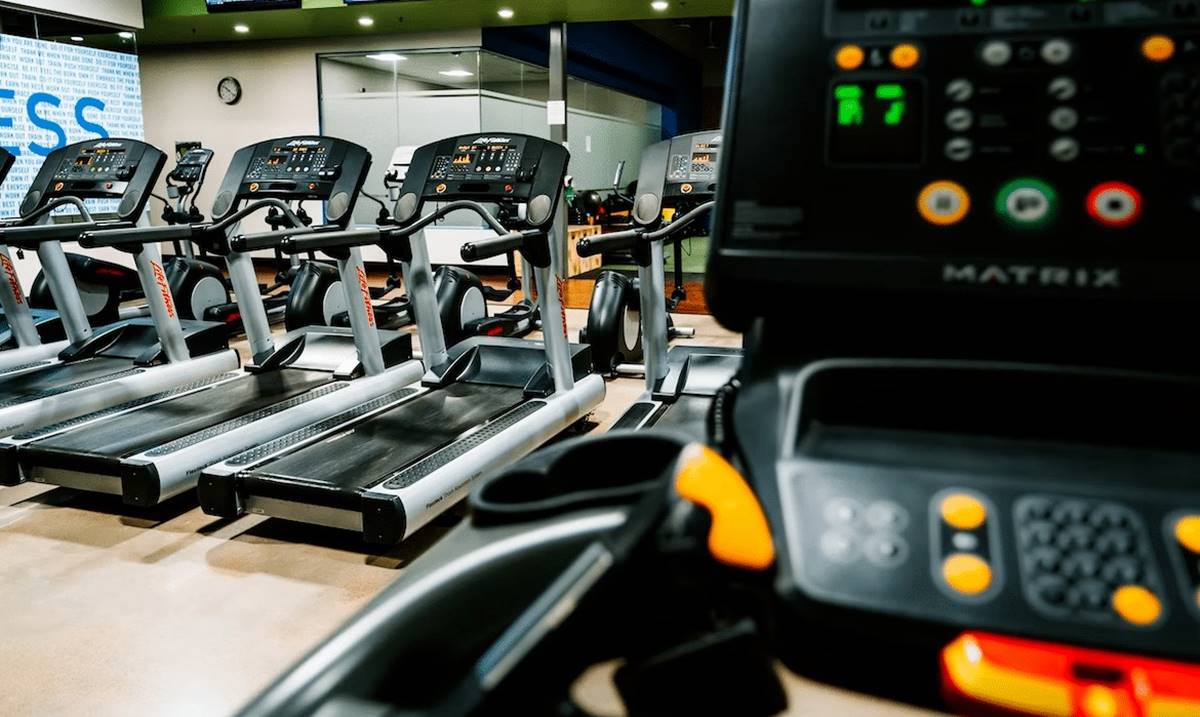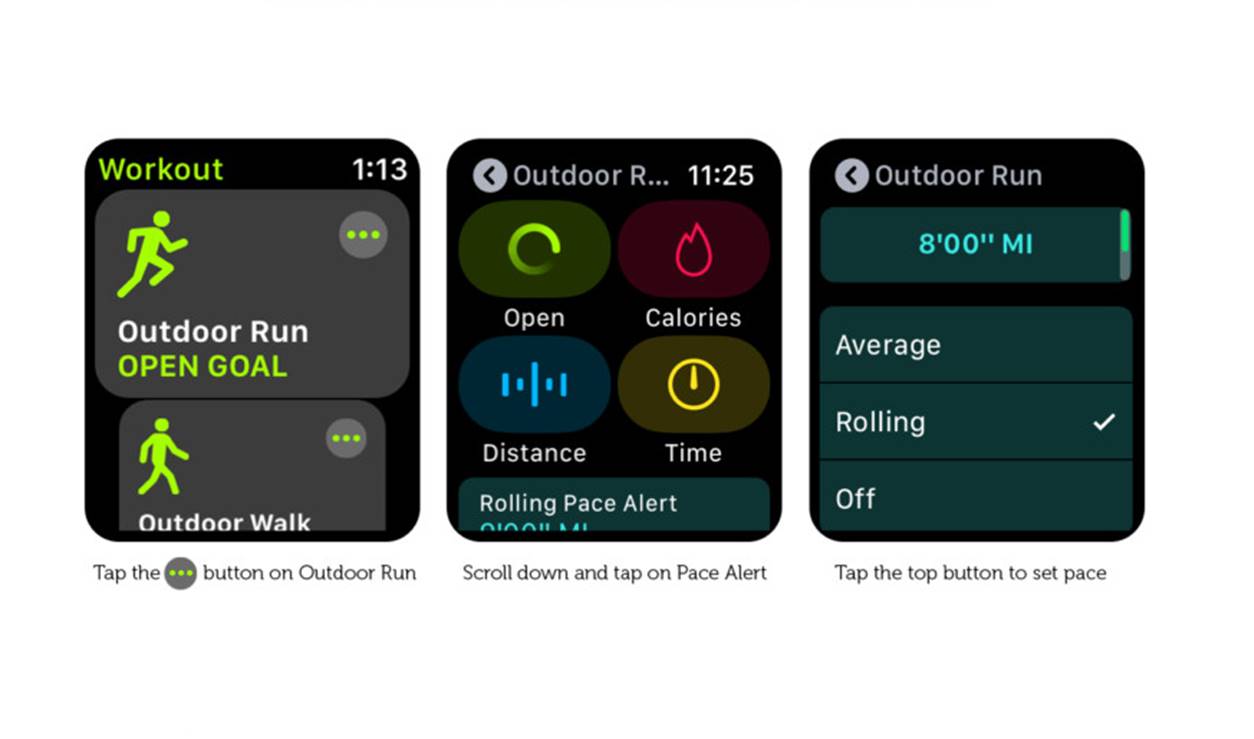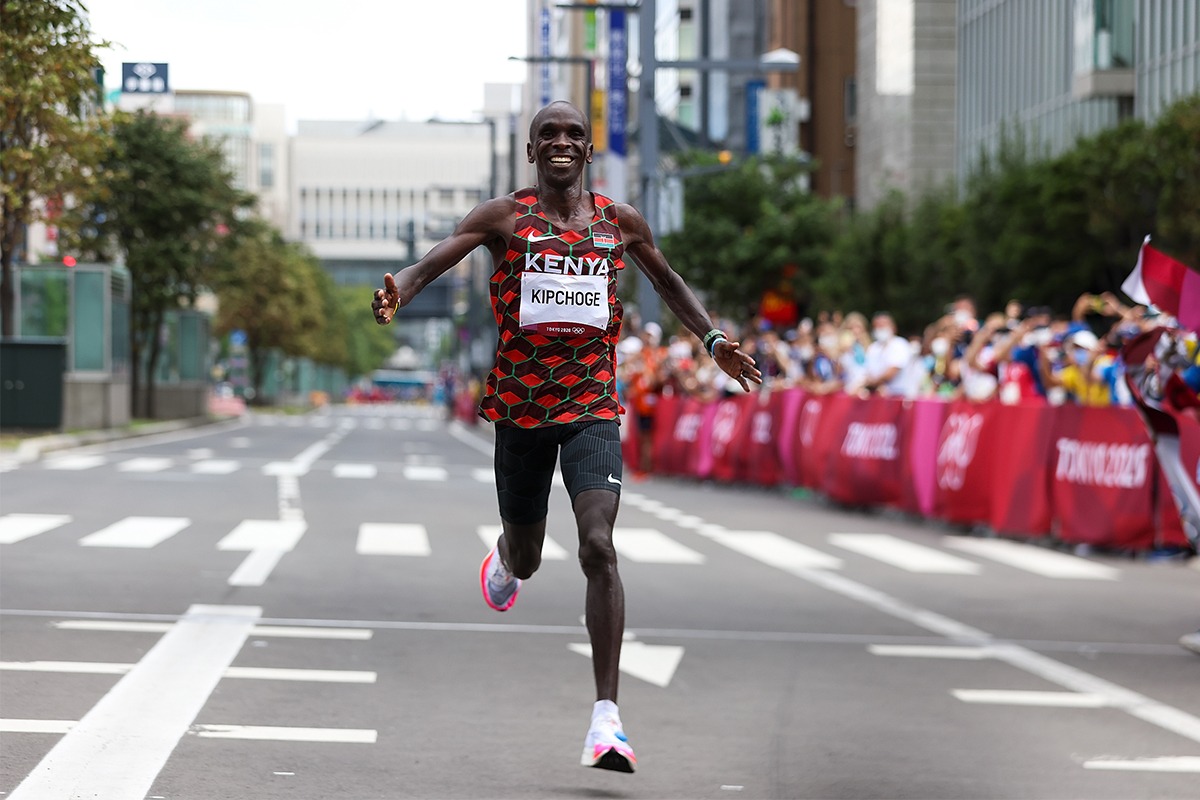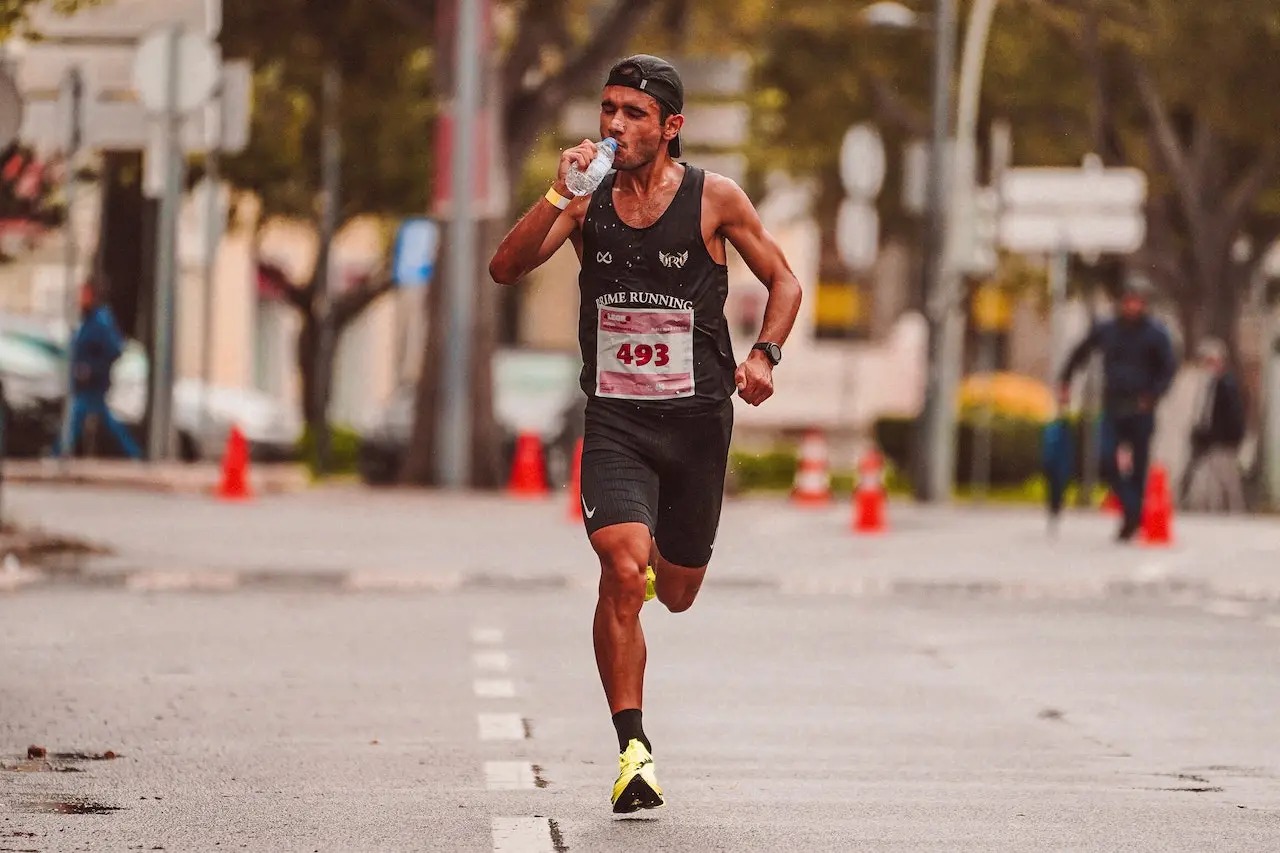

Featured
How Fast Is A 5:20 Pace
Modified: October 18, 2023
Discover how fast a 5:20 mile pace is and learn why it is featured among the top running speeds.
Introduction
Welcome to the world of running, where the thrill of pushing your limits and the joy of breaking personal records intertwine. Whether you’re a seasoned runner or just starting out, understanding mile pace is crucial in tracking your progress and setting goals for yourself. In this article, we’ll dive deep into the concept of mile pace and specifically explore how fast a 5:20 mile pace really is.
Mile pace is a commonly used measurement in the running community, referring to the time it takes to complete one mile. It serves as a benchmark for runners to gauge their speed and endurance. By tracking mile pace, runners can monitor their improvements over time, challenge themselves, and plan their training effectively.
Now, you may be wondering, what exactly does a 5:20 mile pace mean? Simply put, it signifies that a runner is capable of completing one mile in 5 minutes and 20 seconds. This pace requires a significant level of fitness and dedication to achieve. Whether you’re aiming to reach this time yourself or just curious about the capabilities of elite runners, we’ll explore the factors that determine mile pace and the training needed to achieve a 5:20 mile pace.
Keep in mind that mile pace can vary depending on factors such as age, fitness level, and terrain. There is no one-size-fits-all pace for everyone. However, understanding the implications of a 5:20 mile pace can be a valuable tool in your running journey.
Understanding Mile Pace
To fully comprehend the significance of a 5:20 mile pace, it’s important to have a solid understanding of what mile pace represents. Mile pace is the amount of time it takes to complete one mile, typically measured in minutes and seconds. It serves as an indicator of speed and endurance in running, allowing athletes to track their progress and set goals.
Mile pace can be calculated by dividing the total time it takes to run a mile by the distance. For example, a 5:20 mile pace means that a runner covers one mile in 5 minutes and 20 seconds. This pace reflects the runner’s average speed over that distance.
When it comes to mile pace, every second counts. Small improvements in pace can make a significant difference in race outcomes or personal achievements. It’s a benchmark that allows runners to assess their progress over time and compare their performances with others.
It’s worth noting that mile pace is not a static measurement. It can vary depending on several factors, including the runner’s fitness level, age, gender, and the terrain on which they are running. Elite athletes often achieve mile paces that are significantly faster than recreational runners, showcasing their exceptional skill and training.
By understanding mile pace, runners can set realistic goals and tailor their training plans accordingly. It provides a clear measure of progress, helping athletes improve their stamina, speed, and overall performance. Whether you’re training for a race or simply aiming to challenge yourself, a solid grasp of mile pace will undoubtedly enhance your running experience.
How Fast is a 5:20 Mile Pace?
A 5:20 mile pace represents an impressive level of speed and endurance. Completing a mile in 5 minutes and 20 seconds requires consistent training, dedication, and a strong fitness base.
To put it into perspective, imagine running at this pace on a track. You would cover each 400-meter lap in around 1 minute and 20 seconds. This pace is often associated with elite runners who compete at the highest levels of the sport. It showcases exceptional speed and efficiency.
For the average recreational runner, achieving a 5:20 mile pace may require significant effort and training. It’s important to note that every individual is different, and not everyone will be able to achieve this pace. However, working towards it can still result in significant improvements in both speed and endurance.
Running at a 5:20 mile pace translates to an average speed of 11.3 miles per hour or 6 minutes and 41 seconds per kilometer. This level of speed can provide a sense of exhilaration and accomplishment for those who strive to push their limits.
While a 5:20 mile pace is undoubtedly fast, it’s essential to remember that running is a personal journey. Setting realistic goals that align with your own abilities and aspirations is crucial. Don’t feel discouraged if you’re not currently running at a 5:20 pace. Instead, use it as inspiration and motivation to continue improving at your own pace.
By setting small milestones and gradually increasing your speed and endurance through consistent training, you can inch closer to a 5:20 mile pace over time. It’s important to focus on progress rather than comparing yourself to others. Running is ultimately about challenging yourself and enjoying the journey.
Remember, with patience, perseverance, and a well-structured training plan, you can make significant strides towards a 5:20 mile pace. Stay committed to your goals, listen to your body, and celebrate the progress you make along the way.
Factors Affecting Mile Pace
Several factors can impact a runner’s mile pace, determining how fast they can achieve a 5:20 time. Understanding these variables can provide insights into how to improve and optimize your performance. Let’s explore some of the key factors that can affect mile pace:
- Fitness Level: Your overall fitness plays a crucial role in determining your mile pace. Well-conditioned runners with higher cardiovascular endurance and strength tend to achieve faster paces. Regular aerobic and strength training can help improve your fitness level.
- Terrain: The surface you run on can influence your pace. Running on flat, smooth terrain, such as a track, allows for faster speeds compared to hilly or uneven surfaces. Consider the terrain when setting realistic expectations and goals for your mile pace.
- Weather Conditions: Extreme weather conditions, such as high heat or strong winds, can significantly impact your mile pace. Hot weather can increase your heart rate and make it harder to maintain a fast pace. Similarly, headwinds can create resistance and slow you down. Optimal weather conditions can help you achieve your fastest mile pace.
- Training and Experience: Consistent training and experience in running play a vital role in improving pace. Gradually increasing mileage, incorporating speed workouts and interval training, and following a structured training plan can enhance your speed and endurance over time.
- Age and Genetics: Age and genetic factors can influence your mile pace to some extent. Younger individuals tend to have better speed and recovery abilities. Genetics can also play a role in determining your natural running abilities and potential for improvement.
- Mental Toughness: Your mental state and mindset during a run can affect your mile pace. Developing mental toughness, focusing on positive self-talk, and staying motivated can help you maintain a consistent and faster pace.
Keep in mind that the interaction of these factors is unique to each individual. It’s essential to understand your strengths and weaknesses and work on improving them. A holistic approach that includes a well-rounded training plan, proper nutrition, and adequate rest can help you optimize these factors and ultimately improve your mile pace towards achieving a 5:20 time.
Training to Achieve a 5:20 Mile Pace
Achieving a 5:20 mile pace requires specific training strategies that focus on improving both speed and endurance. By following a well-structured training plan and incorporating targeted workouts, you can work towards reaching this challenging goal. Here are some training tips to help you on your journey:
- Interval Training: Intervals are a key component of training to improve mile pace. Incorporate high-intensity interval workouts, such as 400-meter or 800-meter repeats, where you run at a faster pace than your target mile pace. These intervals challenge your body to work at a higher intensity and improve your overall speed and endurance.
- Tempo Runs: Tempo runs involve running at a steady pace that is slightly faster than your target mile pace. This trains your body to sustain a faster speed for a longer duration. Start with shorter tempo runs and gradually increase the duration or distance as you build endurance.
- Long Runs: Long runs are crucial for building aerobic capacity and endurance. While they may not directly target your mile pace, they improve your overall fitness, allowing you to maintain a faster pace for a mile. Gradually increase your long run distance to build stamina and improve your ability to sustain a faster pace.
- Strength Training: Incorporating strength training exercises can help improve overall running performance. Focus on exercises that target the lower body, such as squats, lunges, and calf raises, to develop the necessary leg strength and power for faster running.
- Rest and Recovery: Allow for proper rest and recovery days in your training plan. Your body needs time to adapt and repair itself after intense workouts. Adequate rest ensures that you avoid overtraining and reduce the risk of injuries.
- Consistency: Consistency is key when training for a 5:20 mile pace. Stick to your training plan and make running a regular part of your routine. Consistent training will help you build the necessary endurance and speed to achieve your goal.
Remember, progress takes time and patience. It’s essential to gradually increase the intensity and volume of your workouts to avoid injury. Listen to your body and make adjustments to your training plan as needed. Celebrate small victories along the way, as each milestone brings you closer to your ultimate goal.
By incorporating these training strategies and maintaining a focused and disciplined approach, you can work towards achieving a 5:20 mile pace. Stay motivated, stay consistent, and enjoy the journey of becoming a faster and stronger runner.
Benefits of Running at a 5:20 Mile Pace
Running consistently at a 5:20 mile pace offers numerous benefits that extend beyond just achieving a specific time goal. Let’s explore some of the advantages of running at this pace:
- Improved Cardiovascular Fitness: Running at a 5:20 mile pace requires a high level of cardiovascular endurance. Consistently training at this intensity can enhance your heart and lung capacity, improving overall cardiovascular fitness.
- Increased Speed and Endurance: Running at a faster pace helps improve both speed and endurance. By consistently pushing yourself to maintain a 5:20 mile pace, you will gradually increase your ability to sustain faster speeds over longer distances.
- Enhanced Mental Toughness: Running at a challenging pace builds mental resilience and toughness. Pushing through the discomfort and maintaining focus can translate into other areas of life, improving your overall mental strength and resilience.
- Weight Management: Running at faster paces requires higher energy expenditure, making it an effective tool for weight management. Regular running at a 5:20 mile pace can help burn calories, improve metabolism, and support weight loss or maintenance goals.
- Stress Relief: Running at any pace provides an opportunity to clear your mind and relieve stress. Maintaining a 5:20 mile pace can help you enter a state of flow, where you focus solely on your stride and breathing, allowing for mental relaxation and clarity.
- Improved Performance in Race Settings: Running consistently at a 5:20 mile pace can greatly enhance your performance in races or competitive events. By training at a faster pace, race paces that were once challenging become more manageable, giving you a competitive edge.
- Increased Self-Confidence: Achieving and maintaining a 5:20 mile pace is a significant accomplishment. Doing so can boost your self-confidence and self-belief, not just in your running abilities, but in all aspects of life.
It’s important to note that the benefits of running at a 5:20 mile pace extend beyond the physical realm. The discipline, determination, and commitment required to reach this pace can positively impact all aspects of your life. Embrace the journey, stay consistent, and enjoy the many rewards that come with running at this challenging pace.</p
Conclusion
Running at a 5:20 mile pace represents an impressive level of speed and endurance. It requires consistent training, dedication, and a strong fitness base. While achieving this pace may not be feasible for everyone, understanding the implications of a 5:20 mile pace can serve as motivation and inspiration for runners of all levels.
By understanding mile pace and the factors that can affect it, such as fitness level and training, runners can set realistic goals and tailor their training plans accordingly. Incorporating interval training, tempo runs, and long runs, along with proper rest and recovery, can help athletes work towards achieving their desired mile pace.
Running consistently at a 5:20 mile pace provides an array of benefits, including improved cardiovascular fitness, increased speed and endurance, enhanced mental toughness, weight management, and stress relief. Setting and working towards this challenging goal can boost self-confidence and pave the way for improved performance in races and competitive events.
Remember, running is a personal journey, and progress takes time. It’s important to listen to your body, set realistic goals, and celebrate every milestone along the way. Whether you ultimately reach a 5:20 mile pace or find fulfillment in the process of pushing your limits, embrace the joy of running and the sense of accomplishment that comes with striving to become a faster and stronger runner.
